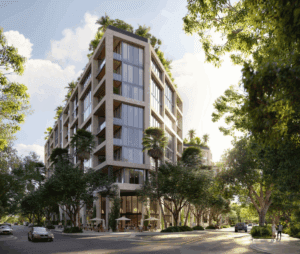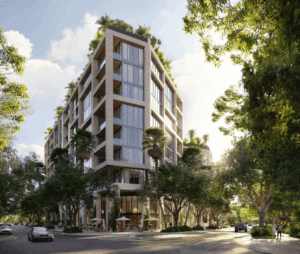 An important guiding principle for hotel design, in-room features and public amenities is, “As one does at home, one will soon expect at hotels.” What this implies is that if hotels are not keeping up with the trends, then they are either losing bookings or will have a hard time growing nightly rates beyond what the commoditized market-determined price commands.
An important guiding principle for hotel design, in-room features and public amenities is, “As one does at home, one will soon expect at hotels.” What this implies is that if hotels are not keeping up with the trends, then they are either losing bookings or will have a hard time growing nightly rates beyond what the commoditized market-determined price commands.
One specific area that many residential and hospitality developers are keenly aware of is how important wellness amenities are nowadays for ground-up area planning and conversion or renovation projects. Without citing one of the now innumerable statistics pointing to the growth of this sector, the underlying demand driver is that ‘health is wealth’ with people of all ages increasingly deciding to prioritize spending on products that sustain a healthier, more active lifestyle. It’s a societal shift with profound implications on hotel and multifamily development.
Whether in the guestroom, residence, spa, fitness center, restaurant, pool or on demand, adding wellness features can augment nightly rates or ancillary revenues for hotels as well as unit price per square foot for apartments or houses. Contrarily, there’s also a risk to not incorporating wellness amenities to varying degrees, especially for hotel brands that have a need to differentiate themselves in order to command above-market rates.
With that in mind, this is still a relatively new concept, and so we must look to the trendsetters to see how they are realizing success by building wellness communities. For this, there’s no better place to look than Miami, a city that’s undergone a renaissance of new development across many real estate sectors over the past decade, with a rapidly burgeoning population of individuals focused on healthy living. It’s now the second healthiest city in the United States, with the most number of people who exercise for 90 minutes or more per week.
Advertisements

To learn more about what wellness features can be cost-effectively built into residential units and hotels, we connected with David Martin of Terra, a leading Miami-based real estate developer, and Kane Sarhan of THE WELL. The latter is the first-ever wellness residential brand that already launched its first project, THE WELL Bay Harbor Miami, and has just announced its second residential development, THE WELL Coconut Grove.
To give you a sense of the demand for homes – and by extension hotels – that actively enhance health and happiness, THE WELL Coconut Grove sold 20% of its unit within the first 48 hours of its announcement. Ranging from one to four bedrooms and starting at $1.5 million, the building will feature HBOT (hyperbaric oxygen therapy), crystal cave relaxation lounges and numerous other luxury wellness features.
To set the scene, the city of Miami is rapidly becoming a global hub for wellness living and longevity travel. What factors are contributing to this evolution?
Martin: Miami’s rise as a wellness and longevity hub stems from its unique combination of climate, natural beauty and diverse culture, coupled with growing demand for holistic living. The city’s focus on integrating wellness into everyday life – through luxury developments like THE WELL Coconut Grove – has solidified its status as a destination where health, sustainability and luxury intersect, attracting residents and travelers seeking a balanced lifestyle. Coconut Grove, in particular, holds a unique place in this transformation. Its rich history, strong sense of community and connection to nature make it the ideal location for wellness-focused living.
How did you recognize this demand and know this was worth pursuing? What sort of feasibility did you conduct to justify the extra investment and go against the grain of focusing purely on cost efficiencies?
Martin: We recognized the increasing consumer focus on health and wellness as an integral part of their living spaces, backed by trends in luxury real estate and wellness spending. By conducting extensive market research, analyzing buyer preferences and seeing the success of our initial collaboration at Bay Harbor Islands, we knew this was a worthwhile investment. The extra cost is justified by the demand for homes that enhance well-being, ensuring long-term value for both residents and the community.
Can you highlight some in-unit features, on-premises amenities, design elements related to neuroarchitecture or biophilia and other FF&E that promote wellbeing?
Sarhan: THE WELL Coconut Grove integrates wellness into every aspect of design, from abundant natural light and biophilic elements like the plant-filled Conservatory and lush rooftop, to thoughtful in-unit features such as dedicated Wellness Dens for at-home meditation and the use of top-tier materials like Italkraft cabinetry and quartzite countertops. Kitchens feature Kraus Kore™ sinks and premium appliances by Sub-Zero and Wolf, ensuring both functionality and elegance. Amenities like the 40,000-square-foot rooftop wellness oasis, Bath House and crystal cave relaxation lounges, hyperbaric chamber and curated wellness packages are designed to help residents make wellness part of their every day. Additionally, personalized services like biannual health coaching and access to the latest wellness tools ensure a holistic, wellness-first lifestyle.
How have you evolved the wellness offering from THE WELL Bay Harbor to THE WELL Coconut Grove?
Sarhan: With THE WELL Coconut Grove, we’ve expanded our vision by incorporating new features like the Wellness Dens, enhanced communal spaces such as the tea garden and aperitif bar, and advanced technologies like the Vitality Lounge. Each new THE WELL is built on insights from past projects, an in-depth review of global wellness trends, and collaboration with top-tier experts to ensure we stay ahead of competitors and deliver a transformative living experience.
When it comes to wellness real estate, there’s often a fine line between covering the costs of constructing all the potentially expensive common amenities and having too many units wherein a building will feel nonexclusive. How do you navigate this balance?
Martin: At Terra, we carefully balance exclusivity and amenities by prioritizing thoughtful design and ensuring the scale of each project aligns with the community’s needs. For THE WELL Coconut Grove, we limited the building to 194 residences to maintain a sense of privacy while investing in state-of-the-art amenities, such as the rooftop wellness oasis and the 13,000-square-foot wellness center. This approach allows us to deliver unparalleled luxury and wellness without compromising the intimate and exclusive experience residents expect.
Are there any synergies that can be realized by having multiple locations in a single city or in close proximity?
Martin: Absolutely. With THE WELL Bay Harbor Islands and THE WELL Coconut Grove, residents can benefit from shared expertise, a consistent wellness philosophy and potentially access exclusive services or programming across locations. This creates a connected wellness ecosystem where residents feel part of a larger community, further enhancing the value and appeal of owning a residence in one of these premier developments.
The courtyard at THE WELL Bay Harbor
Hotels are increasingly getting involved in the wellness real estate market via branded residences. Have you thought about collaborating with any luxury or longevity-oriented hotel brands?
Sarhan: We will continue to bring THE WELL into the spaces where people spend all their time — a hotel partnership would definitely be in line with our plans for growth.
Where do you see the wellness real estate industry going?
Sarhan: I do think wellness real estate is on a path to becoming more mainstream — and that’s a good thing. As more people prioritize their health, their homes will naturally need to reflect that. Wellness features that were once considered indulgences or premium offerings are quickly becoming the expectation. Still, there’s a difference between having wellness elements in your home and living in a place that supports a fully integrated wellness lifestyle. At THE WELL, we’re excited to be setting that standard — designing spaces where every detail, from air and water quality to programming and service, is intentionally crafted with your well-being in mind.
To conclude on a futuristic note, besides trendy wellness amenities like photobiomodulation (PBM), HBOT, low volatile organic compound (VOC) materials or proper HEPA air filtering, what other labor-light, high-tech wellness product categories do you foresee being in demand for wellness real estate projects?
Sarhan: Looking ahead, I foresee demand for AI-driven personalized wellness solutions, such as smart home systems that monitor air quality, lighting and sleep patterns to optimize well-being. Advanced diagnostic tools, including wearable health tech and in-home lab testing, will also grow in popularity.
